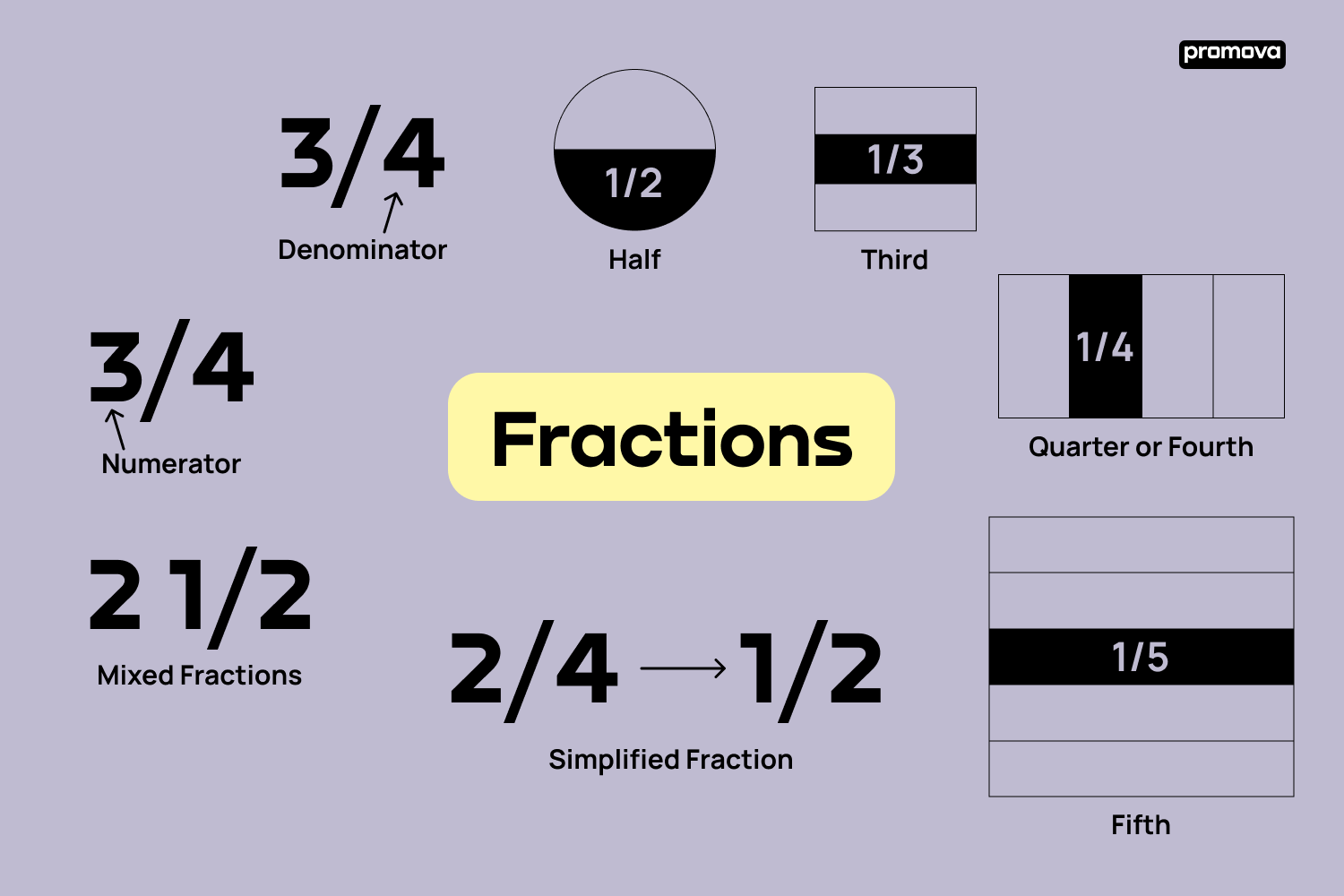Fractions Vocabulary in English
Contents
Today, you will learn how to name fractions in the English language. If you're a language learner striving to understand the vocabulary of fractions, then this guide will be helpful. 
What is a Fraction?
In mathematics, a fraction is a fundamental concept used to represent a part of a whole or any number of equal parts. It's formed by two numbers separated by a slash (/) or a horizontal line. Fractions allow us to work with amounts that are not whole numbers, bridging the gap between integers.
Basic Terms Related to Fractions
Here are some basic terms related to fractions.
- Numerator: This is the top number in a fraction which signifies the number of parts we have. Example: In 3/4, 3 is the numerator.
- Denominator: This is the bottom number in a fraction showing how many equal parts the whole is divided into. Example: In 3/4, 4 is the denominator.
Before we proceed, remember each fraction word has a specific meaning, so understanding them will help you better articulate mathematical ideas.
Basic Fractions
Basic fractions refer to a set of common and fundamental fractional numbers that are frequently used in mathematics and everyday situations. These fractions represent simple divisions of a whole into equal parts. Basic fractions include those with denominators (the bottom number) from 2 to 10, as they are the most commonly encountered fractions.
- Half: 1/2, pronounced as "one-half."
- Third: 1/3, pronounced as "one-third."
- Quarter or Fourth: 1/4, pronounced as "one quarter" or "one-fourth".
- Fifth: 1/5, pronounced as "one-fifth."
The name of the fraction corresponds to the denominator, which is why 1/2 is called "one-half," 1/3 is "one-third," and so on.
15
Types of Fractions
Knowing the types of fractions will help you broaden your fraction vocabulary words.
- Common Fraction/Proper Fraction: When the numerator is less than the denominator. Example: 3/4, pronounced as "three-fourths."
- Top-heavy fraction/Improper Fraction: When the numerator is greater than or equal to the denominator. Example: 7/3, pronounced as "seven thirds."
- Equivalent Fraction: Different fractions that represent the same value. Example: 1/2 is equivalent to 2/4.
- Simplified Fraction: A fraction that has been reduced to its simplest form. Example: 2/4 simplified is 1/2.
- Unit Fraction: A fraction where the numerator is 1 and the denominator is a positive integer. Example: 1/3, pronounced as "one-third."
- Like Fractions: Fractions with the same denominator. Example: 2/5 and 3/5 are like fractions.
- Unlike Fractions: Fractions with different denominators. Example: 1/2 and 2/3 are unlike fractions.
- Mixed Fractions: A number composed of a whole number and a fraction. Example: 2 1/2, pronounced as "two and one-half."
These types of fractions add a new layer of depth to your understanding of fraction vocabulary.
Conclusion
Understanding these fraction vocabulary words will help you confidently navigate through any discussion involving fractions in English. Remember, learning is a continuous process, and every new word adds to your language skills.
Comments